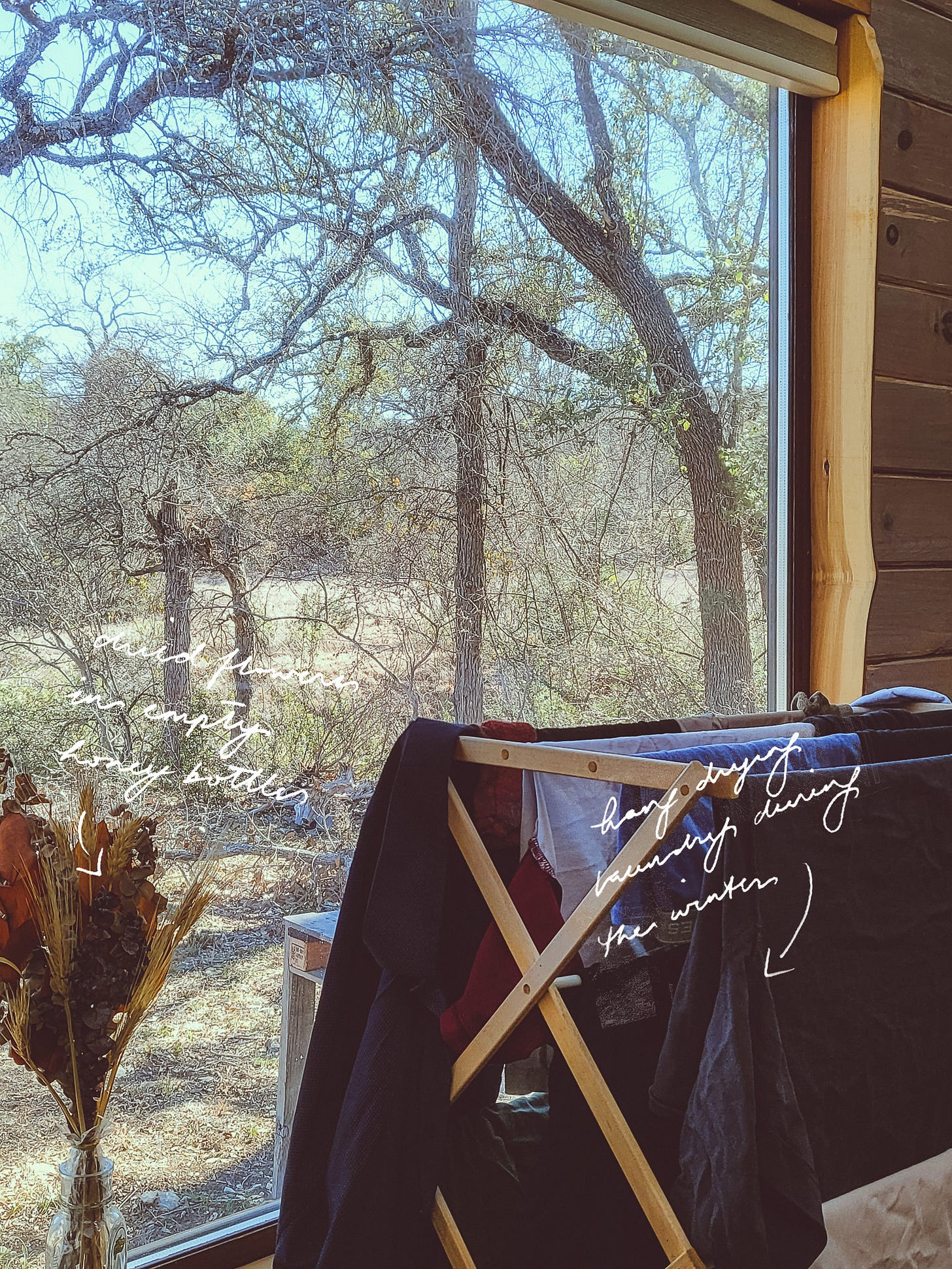In a 200 square-foot home, every movement must be purposeful
My life in a tiny home, six months in, part 1 of 3
You must really like each other is the sentiment people often express when they learn Michael and I live in a 200 square-foot home on wheels. (We do, thankfully.) For context, 200 square feet is the size of a single-car garage, and within this space are a fully-functional kitchen with a refrigerator, gas stove, and oven, a washer/dryer, a bathroom with a soak tub, a folding dining table that doubles as a desk, a day bed, a loft with a double-sized mattress and plenty of storage, and all our possessions combined. Our lives now sit on this 25-by-8-feet trailer.
The tiny home movement, largely credited to Jay Shafer who is said to have built the first tiny home on wheels in 2000 (though seeds of the idea can be traced further back), embodies values I have always wanted to live by: mindfulness, sustainability, and self-sufficiency. By design, tiny home living resists the impulse for accumulation celebrated by the prevailing consumer culture. Those adopting this lifestyle fall somewhere along the spectrum of minimalism whether by necessity—there’s simply not enough space for hoarding—or principle. With housing costs in most cities rising way past average incomes, tiny homes, which are significantly more affordable and offer more flexibility, have also increasingly become an appealing alternative. Fluid future plans and rent prices in Greater Austin in 2022 led us to seriously consider the tiny home route, and after several calculations, obsessive research, and a leap of faith, we bought a second-hand tiny home.
Because of the limited space, every movement must be purposeful—and this requires a lot of energy.
The structure of the tiny home and all that accumulates within it are the result of conscious, purposeful decisions that take into account only what is necessary—the climate and topography of its location and the homeowners’ tastes and priorities. While the same may be said even for ordinary homes, the size of tiny homes, which are usually no larger than 400 square feet, insists on a ruthless evaluation of what is truly important. Anything beyond the essential—nice-to-haves, extras or back-ups, interesting trends—easily becomes glaringly excessive or wasteful.
A difficult compromise in the home we chose was sacrificing closet space for a full kitchen. Other models with similar dimensions may have more space for clothes, but would only have a mini-fridge, a small kitchen counter, or an even smaller pantry. While dressing up has always been a source of pleasure and outlet for creativity, sufficient space to create and store food was undoubtedly more important. Forced to keep a modest wardrobe, I reevaluated my style and what fashion meant to me. Clearly, garments I’ve only worn once or twice despite my idealized perception of them—a second-hand asymmetrical denim Alexander Wang skirt, five-inch platform heels, a nude bodycon dress with long sleeves and a mock neck—are misaligned with how I presently express myself and are best given away. They reflect, perhaps, a version of me I decided not to bring to life, but once desired. Downsizing my wardrobe meant I needed to be honest about what I need, considering where I live and the circumstances I expect to find myself in, and how I wish to be seen.
Beyond the self-reflection, this spatial arrangement also requires thoughtful planning. Having my clothes stored in deep drawers where certain fabrics get wrinkled despite all attempts at neat folding requires me to envision my outfits in advance in case anything needs to be steamed or ironed. Most days I can get away with imagining what I will wear, but on special occasions I will test the look the night before and hang it on the pantry knob, freshly pressed and ready for the morning.
This habit of planning applies to every aspect of the lifestyle. Whatever I retrieve from storage and place onto the desk, counter, or seat must be something I need at the moment. Leaving objects scattered around takes up valuable surface area and makes the room feel so much smaller, so there’s a very visceral discomfort in the clutter, like an itch that needs to be scratched before I can properly function within the space. Books I have finished cannot linger on the table and must be put away in my little library above the pantry. Spices and ingredients I’ve brought out onto the kitchen counter must be returned to their proper place after cooking, and, to avoid unpleasant odors and cluttered workspaces, soiled dishes must be washed immediately.
Dust also accumulates more obviously in a tiny space, so maintaining the cleanliness of the home is a daily responsibility. The simplest task is sweeping the house every day, a chore that takes no more than five minutes. With two people working, deep cleaning the house—wiping every surface clean, descaling the sinks and tub, emptying the trash and compost toilet, reorganizing what has been left in disarray—requires only half a day.
With very little space for neglect, the required day-to-day planning and management demands a lot of mental and physical energy. Inevitably, some days are harder than others, and the work can seem daunting, so developing systems and habits to manage these tasks efficiently is paramount. A pillar in my everyday life is keeping a bullet journal where repeating household tasks, like refilling our second propane tank, emptying the compost toilet, cleaning our mini-split, are tracked in a simple chart, and every day is given a clear, achievable agenda organized by special markings. Most importantly, knowing that I am not alone—that these responsibilities are shared with another person with the same set of values—elevates the work from chores to a way of life.
Thank you for reading! Part 2 will be released on February 8.








Great read, Texas is lovely 😄
Looking forward to Part II!